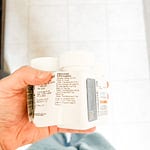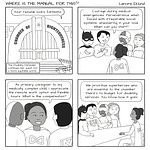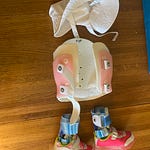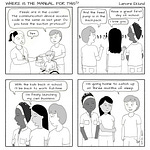
This week, I gave testimony to an Oregon legislative committee on the importance of figuring out Medicaid billing in schools. That was the subject of the investigation I co-reported with Emily Harris for NPR:
Schools could be getting millions more from Medicaid. Why aren't they?
You can watch and read all of the testimony on the House Interim Committee on Education’s website. Here’s a link to the video that starts when the topic does. My portion starts at minute 40:00 but please listen to all of the invited testimony on the topic.
If you prefer to read it, here’s what I wrote for my speech:
Chair Neron, Vice Chair Wright and members of the committee,
My name is Shasta Kearns Moore and I’m a freelance reporter and founder of MedicalMotherhood.com
Thank you for inviting me to speak with you today about the findings of an investigation into Medicaid money in schools that I co-reported recently for NPR.
More than 42 million American children — about half of all minors — are on Medicaid. The head of Medicaid and CHIP told us he envisions a world where all of those children can get the healthcare they need at school instead of having to miss days to travel to appointments or simply not get the care until it is more costly… or too late. To meet that goal, Medicaid has streamlined its rules and processes and created a technical assistance center to aid school districts in qualifying for funding. States simply need to do their part in updating their plans and modernizing their records systems.
Schools are already providing billions of dollars in health services to K12 students. Medicaid could be a way to finally fund the underfunded mandate of the Individuals with Disabilities Education Act that affirms the civil rights of all children to a public education.
The CDC estimates that about one in six children between the ages of 3 and 17 have a developmental disability. This is the most common type of disability in childhood. These are things like autism, cerebral palsy, and other neurological disorders. As recent research into neuro plasticity has shown, the proper approach to these disabilities is a brain-based, LEARNING approach. Education and health care actually have a lot they can learn from one another when it comes to childhood-onset disabilities and mental health conditions.
Integrating the nation’s school and healthcare systems would have massive benefits for the future generations of this country. You have the opportunity to break down the barriers between different buckets of money that taxpayers would like to see going to actually benefit the qualified child — rather than getting stuck in a maze of bureaucracy.
Other states have figured this out already. Chicago Public Schools estimates it will get about $50 million in reimbursements this year. Texas got $741 million from the federal government in 2021. Oregon has already tried a pilot project from SB 111 and with its state plan amendment approved this year, there’s a potential for the funding that students with IEPs and 504s have been promised.
Thank you for looking into how students can get the health services they need in the classrooms they are already in.
Friends, I’m considering ending the podcast’s run. If an audio version is something you really need or want, will you please let me know? Orr, if you have ideas for how the podcast can be improved, let’s hear them! Thanks!
Medical Motherhood’s news round up
Snippets of news and opinion from outlets around the world. Click the links for the full story.
• From Oregon Capital Chronicle: “Did Oregon children eligible for Medicaid lose coverage?”
[…]In Oregon, 472,000 children qualify for Oregon Health Plan benefits, including about 8,400 who lack residency documents. Oregon has extended those benefits to undocumented immigrants through a state program – Healthier Oregon Program, or HOP, that uses federal and state funds.
[…]Health authority officials were due to meet with their federal counterparts this week to find out whether Oregon had indeed dumped children from Medicaid.
State data shows that nearly 59,000 people have lost coverage since the state started the “redetermination” process, with people getting booted at the end of the month. A data dashboard that breaks those numbers down by demographics does not include information about those 19 or younger.
Heartquist said it was premature to say what the health authority would do if children had been wrongly disenrolled.
“We will not know this until we know if there is an affected population and how large it is,” she said in a statement. […]
• From the Big Issue (U.K.): “Councils wasting millions in taxpayer cash fighting families of disabled kids – and losing”
[…Regional governments in the United Kingdom] wasted £60 million in a year on unsuccessful court disputes with parents and carers seeking support for children and young people with special educational needs and disabilities.
The money spent in 2021-2022 would have funded 10,000 places in mainstream schools for children with additional needs.
[…]A massive 96% of cases were won by families.
These figures come just days after freedom of information requests from the Big Issue revealed that the government spends tens of millions each year fighting disabled and ill people who are appealing a benefits decision – only to have the majority of those overturned in favour of the claimant.
Even those who believe benefits are over-generous have to stop and think why taxpayers’ money is spent fighting losing battles.
It is both immoral and fiscally irresponsible to expect parents who have often given up work to support their disabled children and who might be providing 24-hour waking care, to go up against council-employed barristers to make their case.
[…]England’s most senior social worker, Dame Christine Lenehan, said this week: “If you had to design a [special education] system from scratch you would have to be on mind-altering drugs to come up with what we have now.” It can take years for a child’s diagnosis, once diagnosed parents are frequently left with a leaflet explaining the condition but no suggestion of where to find help. Traumatised parents are suddenly on a completely different path than the one they imagined.
[…]This is where parents deploy the language of the battlefield to describe their scrap for services. Everything is a fight. Parents already worn down by caring are expected to plead for everything that most non-disabled families take for granted – a decent school and teaching and support that allows them to flourish.
[…]Something has to give. Government has to take the needs of our children seriously, local authorities must be properly funded and their staff trained to make the best decisions for the people at the heart of this dysfunctional system – disabled children.
• From CNN: “Hundreds of young people with disabilities are learning at a new university founded by CNN Hero of the Year Jeison Aristizábal”
When Jeison Aristizábal became the CNN Hero of the Year in 2016 – the first from Latin America – he shared a powerful message for young people with disabilities and their families.
“I want to tell you that, yes, you can. You can dream and you can achieve your dreams,” he said.
Growing up with cerebral palsy in one of the poorest areas of Cali, Colombia, Aristizábal pushed himself to defy society’s expectations. He has dedicated his life to bringing therapy, education, and support to other young people with disabilities in his community so they can realize their potential.
[…]This year, he and his foundation realized yet another big dream: Building a university. Inspired by a group of older students from the program, the organization began construction two years ago.
“Today we have the first university for young people with disabilities in Latin America,” he said.
Now in its first year, with 300 students enrolled, the university offers a range of classes, including computer programming, 3D technology, graphic design, and languages. Students can also learn skills in culinary arts, carpentry, music, and tailoring.
“It has all the equipment so that people with disabilities can study in an accessible way,” Aristizábal said. “We have ocular technology, for example. Those who can’t move their hands or feet are operating computers with their eyes.”
Aristizábal says the focus is not only to help students attain their college education but to prepare them for employment so they can join the workforce, become providers in their families, and contribute to a variety of fields.
“The foundation is changing the concept of the word ‘disability,’ understanding that they can, that they’re capable,” he said.[…]
Medical Motherhood brings you quality news and information each Sunday for raising disabled and neurodivergent children. Get it delivered to your inbox each week or give a gift subscription. Subscriptions are free, with optional tiers of support. Thank you to our paid subscribers!
Follow Medical Motherhood on Facebook, Twitter, TikTok, Instagram or Pinterest. The podcast is also available in your feeds on Spotify and Apple Podcasts. Visit the Medical Motherhood merchandise store.











